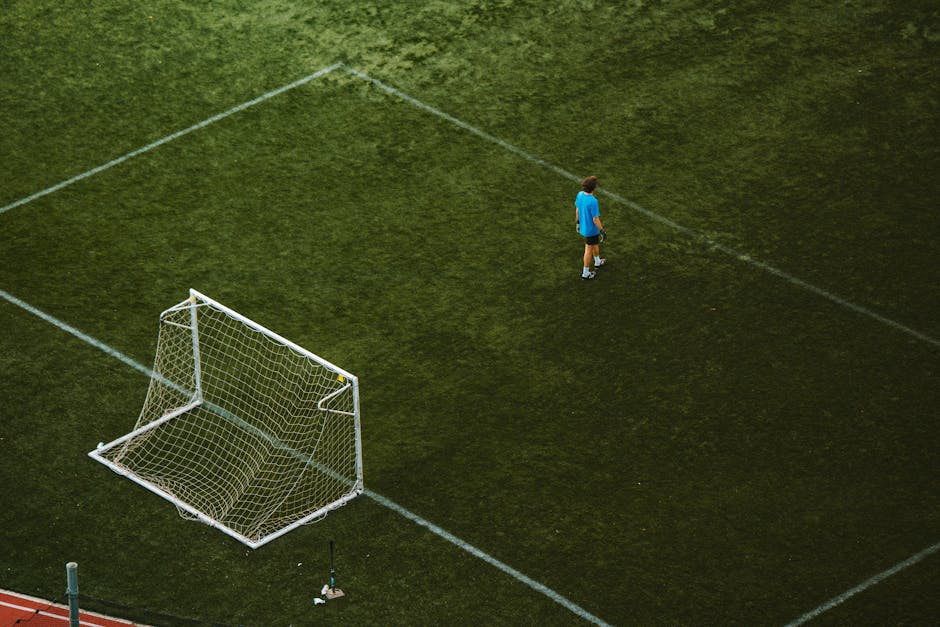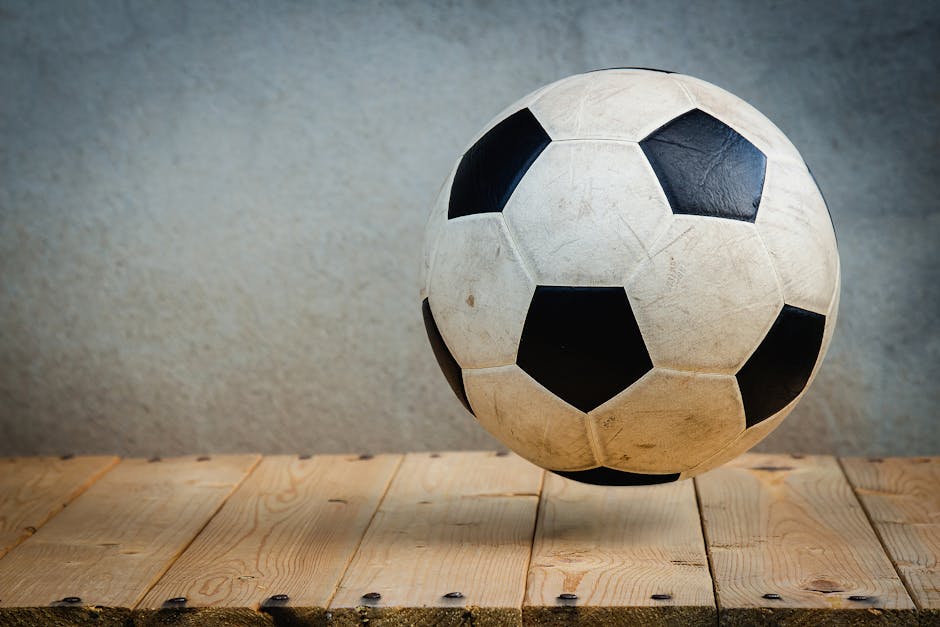Individual soccer training is one of the most effective ways to accelerate your growth as a player. Unlike team practices, which focus on tactics and group play, solo sessions allow you to sharpen your technical skills, increase your ball touches, and build confidence. By committing to regular individual soccer training, you can identify weaknesses, improve them at your own pace, and make yourself a more complete player.
This guide explains the basics of individual soccer training, covering why it matters, the core areas to focus on, how to structure effective sessions, and common mistakes to avoid. Along the way, you’ll also find internal links to deeper guides:
- Soccer training equipment guide,
- Solo soccer training: Fitness & conditioning guide,
- How to improve soccer recovery and prevent injuries
- How to structure smart individual soccer training sessions
No matter your age or skill level, the benefits of individual soccer training are undeniable. Whether you play for fun or dream of reaching a higher level, solo training will help you progress faster and perform with greater confidence on the field.
Why individual training matters
More touches on the ball
Team practices often limit how much time each player spends on the ball. In contrast, individual soccer training ensures hundreds of touches in just one session. The more frequently you handle the ball, the more natural your movements become. For example, ten minutes of juggling or dribbling in your backyard can deliver more ball contact than an entire team session.
Opportunity to focus on weaknesses
Every player has areas that need work. Perhaps your weaker foot lacks power, your first touch is inconsistent, or your finishing under pressure isn’t reliable. Solo training allows you to dedicate extra time to these weaknesses without slowing down a team session. Over time, focused repetition sharpens these skills and balances your overall ability.
Builds mental toughness and discipline
Training alone requires commitment. Without coaches or teammates to push you, you must find motivation from within. This habit strengthens your mental toughness and self-discipline—qualities that separate good players from great ones. A player who consistently works on their own is more likely to stay calm and focused during competitive matches.
Accessible anywhere with minimal equipment
One of the greatest strengths of individual soccer training is accessibility. You don’t need a full pitch or professional setup to make progress. A ball, a wall, and a few cones can build real skill anywhere. Still, the right tools can speed up improvement and sharpen technique. If you’re ready to level up your sessions, explore our Soccer training equipment guide to see which gear helps transform simple drills into powerful progress.
Core areas of individual soccer training
Solo training can feel overwhelming if you don’t know what to focus on. To make progress, it’s important to cover all the fundamental areas that impact performance. The following six categories form the backbone of effective individual soccer training.
3.1 Fitness & conditioning
Soccer demands a blend of endurance, agility, strength, and speed. Without strong conditioning, even the best technical skills fall apart under pressure. Solo training gives you full control over how you build these qualities.
- Endurance: Interval running is one of the most effective methods. Try sprinting for 20 seconds, jogging for 40 seconds, and repeating for 10–15 minutes. This mimics match intensity while boosting stamina.
- Agility: Set up cones in zigzag or ladder patterns. Practice quick changes of direction, sharp turns, and sudden stops. These drills prepare you to react faster in games.
- Strength: Bodyweight circuits (such as squats, lunges, planks, and push-ups) are simple but powerful. They develop the strength needed to hold off defenders and maintain balance.
- Speed and explosiveness: Plyometric exercises like box jumps, sprints from a standing start, and bounding drills improve your ability to accelerate quickly.
For a deeper dive into this area, see Solo soccer training: Fitness & conditioning guide.
3.2 Ball mastery
Ball mastery is the foundation of soccer success. The more comfortable you are with the ball, the more confident and effective you’ll be under match pressure.
- Touches: Start with simple moves like toe taps, inside-outside touches, and sole rolls. Repeat for one to two minutes each, focusing on rhythm and precision.
- Juggling: Begin with your dominant foot, then gradually introduce your weaker foot, thighs, and head. Track your progress and aim for a personal record each week.
- Dribbling patterns: Set up cones for slalom-style dribbling. Mix tight control with sudden bursts of speed to simulate real match scenarios.
These drills don’t just build coordination; they also improve balance and spatial awareness. Players who consistently train ball mastery tend to look more composed and confident in games.
3.3 Passing & shooting
Passing and shooting are often thought of as team-based skills. However, individual soccer training can sharpen both with the right setups. Find some easy drills below to start develop your passing and shooting on your own:
- Wall passing: Use a sturdy wall for one-touch and two-touch passes. Vary the pace and angle. Alternate between left and right foot.
- Turning practice: Pass against the wall, receive, then turn quickly before moving forward. This builds game-like habits of receiving and transitioning.
- Target shooting: Place cones or markers in the corners of a goal or on a wall. Aim for accuracy, not just power. Alternate shooting with both feet.
- Shooting under pressure: Do a short sprint or a set of push-ups before striking the ball. This simulates finishing when tired during a game.
Consistent practice in these areas improves accuracy, composure, and technique, even without teammates.
3.4 Awareness & decision-making
Good soccer players don’t just react; they anticipate. While awareness and decision-making are usually associated with live games, solo training can still enhance these mental skills.
- Scanning habit: Even when working with a wall, glance over your shoulder before receiving the ball. This builds the instinct of checking your surroundings.
- Simulated choices: Use cones to represent teammates or defenders. Before each touch, decide where you would play the ball in a match scenario.
- Video learning: Study professional matches. Pause before key decisions and ask yourself what option you would choose. Compare your choice to the player’s actual decision.
By developing these habits, you’ll make quicker, smarter choices under real pressure.
3.5 Mental preparation
The mental side of soccer is often overlooked, but it plays a decisive role in performance. Individual soccer training gives you the chance to strengthen your mindset.
- Goal setting: Set specific, measurable targets such as “200 weak-foot passes per week” or “5 minutes of juggling without dropping the ball.”
- Visualization: Imagine yourself in game situations: receiving under pressure, scoring the winning goal, or making a perfect pass. This mental rehearsal improves confidence and readiness.
- Consistency: Training alone requires motivation. By showing up consistently, even when you don’t feel like it, you build resilience that carries into matches.
Mental preparation transforms solo training from routine practice into a powerful tool for long-term growth.
3.6 Recovery & injury prevention
Pushing hard in training is important, but recovery is what allows you to keep improving over the long term. Ignoring it often leads to burnout or injury.
- Stretching and mobility: Focus on hamstrings, calves, quads, and hips after every session. Include dynamic stretches before and static stretches after.
- Nutrition: Support your training with proper meals rich in protein, carbs, and healthy fats. Fueling your body correctly accelerates recovery.
- Hydration: Dehydration reduces performance and slows recovery. Drink water consistently throughout the day, not just post-training.
- Sleep: Aim for 7–9 hours per night. Quality sleep restores both body and mind.
For an in-depth breakdown, see How to improve soccer recovery and prevent injuries.

How to get started with solo training
Getting started with individual soccer training doesn’t need to be complicated. Many players delay because they think they need advanced equipment or a detailed program, but the truth is that small, consistent steps deliver the biggest results.
- Keep it simple: A ball, a wall, and a few cones (or household substitutes like water bottles) are enough. Many professional players grew up training with little more than these basics.
- Structure your sessions: To maximize efficiency, divide each session into clear stages: warm-up, technical drills, skill focus, game-like drill, and cool-down. This structure mirrors professional training and ensures balance.
- Start small: Begin with 20–30 minute sessions, two to three times per week. As consistency grows, extend the length or add more sessions. Consistency is more important than intensity.
- Track your progress: Keep a training journal, log juggling counts, record your wall passes, or film yourself to review technique. Progress tracking motivates you and highlights areas for improvement.
Remember, progress comes from repetition and patience. A simple 20-minute ball mastery routine done three times per week for a year is more effective than a complicated plan you quit after two weeks.
Once you’ve decided to begin, the next challenge is knowing exactly how to organize your practice time. For a step-by-step breakdown, see this article on How to structure smart individual soccer training sessions. It will help you turn your goals into focused, game-changing routines.
Common mistakes to avoid
Even committed players make errors that limit the effectiveness of their solo sessions. Avoiding these pitfalls ensures your hard work translates into real progress.
- Training without a plan: Randomly kicking a ball around doesn’t create meaningful growth. Always enter each session with clear objectives, even if it’s just 15 minutes focused on weak-foot passing.
- Ignoring your weaker foot: Over-relying on your dominant foot makes you predictable in matches. Dedicate equal time to strengthening your weaker side.
- Going too easy or too repetitive: Comfort-zone drills feel good but don’t drive improvement. Challenge yourself with tighter spaces, faster tempos, or new skills.
- Overtraining or skipping recovery: More is not always better. Without proper recovery, you risk injuries and burnout. Balance effort with rest.
- Practicing mistakes: Repetition only helps if your technique is correct. If possible, record your sessions or seek feedback to ensure accuracy.
By being mindful of these mistakes, you’ll make every session more productive and avoid reinforcing bad habits.
Key takeaways
- Individual soccer training is the fastest and most reliable way to sharpen fundamentals and accelerate development.
- Cover all areas: fitness, ball mastery, passing, shooting, awareness, mindset, and recovery.
- Consistency and structure matter more than the length or intensity of your sessions. Short, focused routines create lasting results.
- Solo training is essential, but it should complement (not replace) team practice. Both are needed for complete development.
Next step: Explore our in-depth guide on [link to: Solo soccer drills: How to master the game on your own] to design your first structured solo training routine.
How to take the next step in your individual soccer training journey
Individual soccer training explained simply: it’s about taking control of your development. While coaches and teammates play a vital role, your greatest progress happens when you commit to improving outside of scheduled practices. By focusing on the core areas outlined in this guide (fitness, ball mastery, passing, shooting, awareness, mental strength, and recovery), you can transform your game step by step.
The beauty of solo training lies in its simplicity and accessibility. All you need is a ball, some space, and the drive to keep improving. Over time, the small daily habits you build through individual training will set you apart from others who only rely on team sessions.
If you’re serious about becoming a more complete and confident player, start today. Pick one skill to work on, set a measurable goal, and begin your journey toward mastery. The field is yours, and the ball is waiting.

